Black History
When Paying Homage to Our History, Remember Our Ancestors’ Stories that the Bones Will Tell
NEW ORLEANS DATA NEWS WEEKLY — In September, 1997, Dr. Michael Blakey, former Howard University archaeology professor visited New Orleans.
By Leon A. Waters, Chairperson of the Louisiana Museum of African American History; Manager of Hidden History Tours, @ www.HiddenHistory.us
In September, 1997, Dr. Michael Blakey, former Howard University archaeology professor, and former director of the African Burial Project from New York City, visited New Orleans. Dr. Blakey was brought to New Orleans to introduce New Orleans public high school teachers and students to the world of archaeology and anthropology by examining the former slave skeletal remains buried in two former slave cemeteries on the site of the Bonnet Carre’ Spillway.
This educational venture was part of the Authentic Voices Project, an African Studies program, chaired by its director, Dr. Clyde Robertson and sponsored by the New Orleans Public School System. This effort was conducted jointly with Malcolm Suber, spokesperson for the African American History Alliance of Louisiana, (now the Louisiana Museum of African American History), the Army Corps of Engineers, and the University of New Orleans.
Teachers and students from Booker T. Washington, Benjamin Franklin, McDonogh #35 and McMain High Schools visited the former cemetery sites of the Kugler and Kenner plantations. Dr. Blakey demonstrated how excavation is conducted, engaged the students in the process, and conducted a public examination of some of the skeletal remains obtained negligently by the Corps of the Engineers. Dr. Blakey would make the comment: “Much of the written record of the former enslaved has been neglected. Archaeology is what is used to uncover this record. The living people are not here, but the remains are.”
What did the bones reveal?
The bones of several African peoples (Kongo, Angola, Mandingo, Senegal, etc.) were examined and explained. Dr. Blakey was able to trace the impact of ‘slave labor’ on the human body. His examination of the deceased bones would reveal damage to the upper and lower body parts traced back to repetitive motion, or mechanical stress in the bones or both. He would explain how the muscle and ligament attachments of the arms and legs illustrated how the enslaved was engaged in lifting and pulling. He pointed out the many examples of muscle tear in the arms and the legs consistent with overwork.
He furthered examined the dental remains. He was able to highlight the kinds of foods the enslaved consumed noting that the enslaved had a very unhealthy and poor diet. This was very evident by his examination that included chemical testing. The enslaved diet consisted of a large reliance of starchy foods, including flour, corn, peas, yams, potatoes, sugar, rum and salted fish. In addition, his examination revealed the presence of scurvy, dental loss, and abscessing which was consistent with a diet in sugars and starches.
Dr. Blakey was able to show how the enslaved from the two cemeteries were worked to death and how malnourished they were. His examination would reveal the depth of the oppression our ancestors suffered. The scholarly work that he introduced to those teachers and students is no longer being shared or taught in our public schools today. Today, Dr. Blakey is the Director of the Institute for Historical Biology at William and Mary College in Virginia.
We, who are citizens in New Orleans, have to find a way to restore such invaluable instruction to today’s schools.
Activism
Oakland Post: Week of November 26 – December 2, 2025
The printed Weekly Edition of the Oakland Post: Week of November 26 – December 2, 2025

To enlarge your view of this issue, use the slider, magnifying glass icon or full page icon in the lower right corner of the browser window.
Activism
Oakland Post: Week of November 19 – 25, 2025
The printed Weekly Edition of the Oakland Post: Week of November 19 – 25, 2025
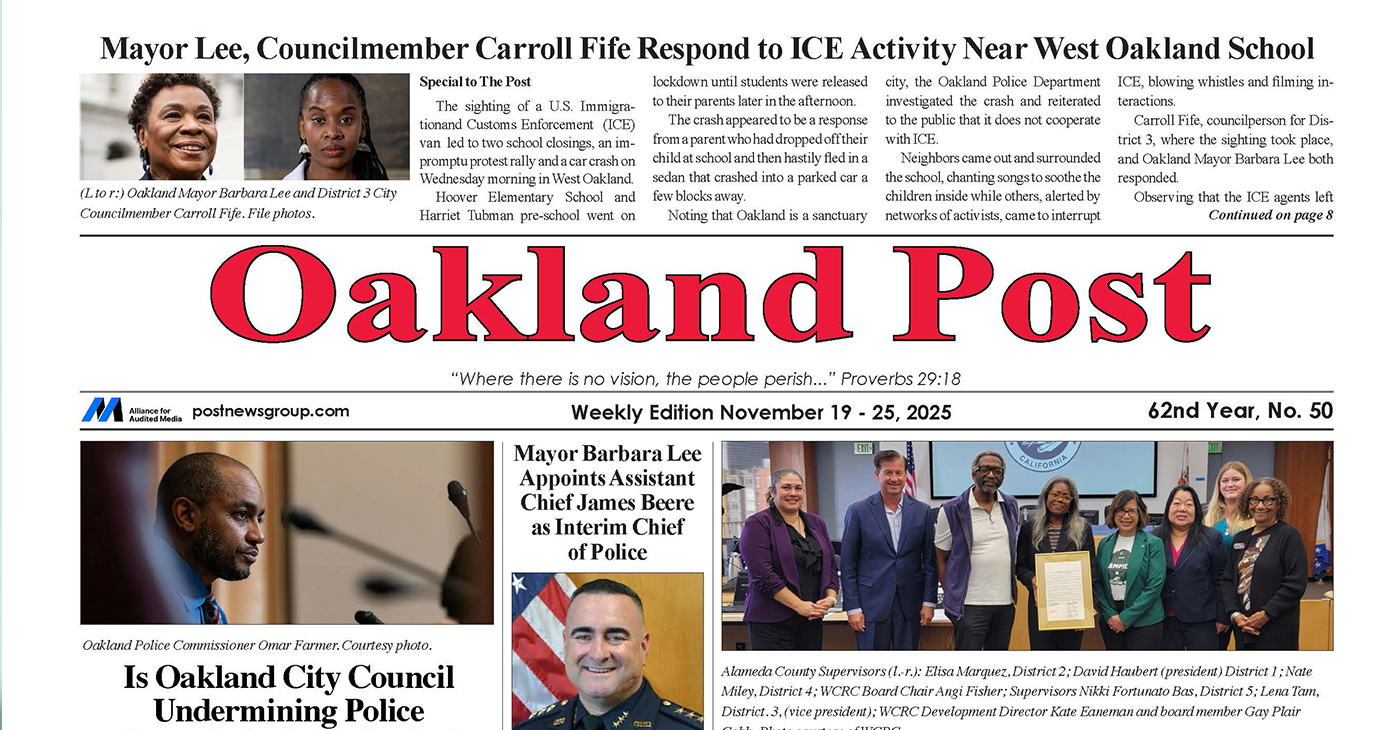
To enlarge your view of this issue, use the slider, magnifying glass icon or full page icon in the lower right corner of the browser window.
Activism
IN MEMORIAM: William ‘Bill’ Patterson, 94
Bill devoted his life to public service and education. In 1971, he became the founding director for the Peralta Community College Foundation, he also became an administrator for Oakland Parks and Recreation overseeing 23 recreation centers, the Oakland Zoo, Children’s Fairyland, Lake Merritt, and the Henry J. Kaiser Convention Center.
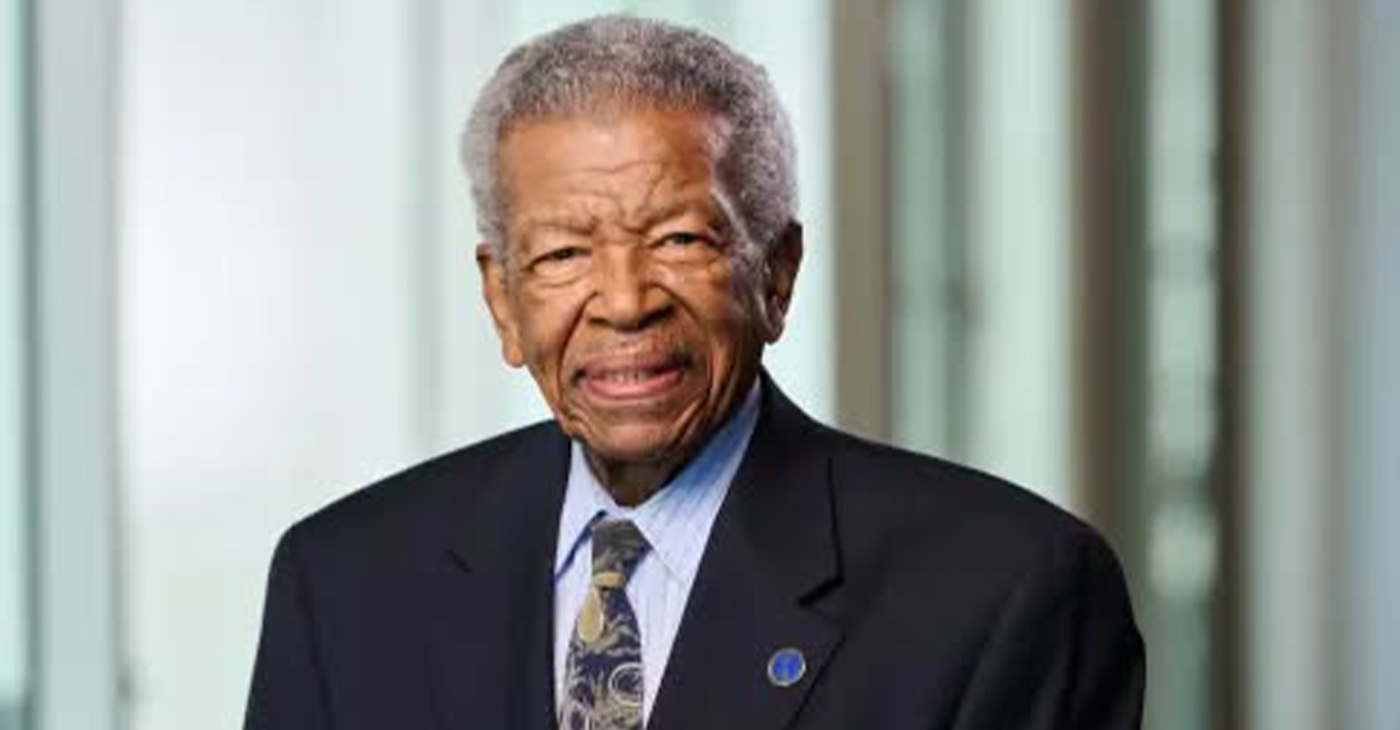
William “Bill” Patterson, 94, of Little Rock, Arkansas, passed away peacefully on October 21, 2025, at his home in Oakland, CA. He was born on May 19, 1931, to Marie Childress Patterson and William Benjamin Patterson in Little Rock, Arkansas. He graduated from Dunbar High School and traveled to Oakland, California, in 1948. William Patterson graduated from San Francisco State University, earning both graduate and undergraduate degrees. He married Euradell “Dell” Patterson in 1961. Bill lovingly took care of his wife, Dell, until she died in 2020.
Bill devoted his life to public service and education. In 1971, he became the founding director for the Peralta Community College Foundation, he also became an administrator for Oakland Parks and Recreation overseeing 23 recreation centers, the Oakland Zoo, Children’s Fairyland, Lake Merritt, and the Henry J. Kaiser Convention Center.
He served on the boards of Oakland’s Urban Strategies Council, the Oakland Public Ethics Commission, and the Oakland Workforce Development Board.
He was a three-term president of the Oakland branch of the NAACP.
Bill was initiated in the Gamma Alpha chapter of Kappa Alpha Psi Fraternity.
In 1997 Bill was appointed to the East Bay Utility District Board of Directors. William Patterson was the first African American Board President and served the board for 27 years.
Bill’s impact reached far beyond his various important and impactful positions.
Bill mentored politicians, athletes and young people. Among those he mentored and advised are legends Joe Morgan, Bill Russell, Frank Robinson, Curt Flood, and Lionel Wilson to name a few.
He is survived by his son, William David Patterson, and one sister, Sarah Ann Strickland, and a host of other family members and friends.
A celebration of life service will take place at Henry J. Kaiser Convention Center (Calvin Simmons Theater) on November 21, 2025, at 10 AM.
His services are being livestreamed at: https://www.facebook.com/events/1250167107131991/
In lieu of flowers, donations can be made to the Euradell and William Patterson scholarship fund TBA.
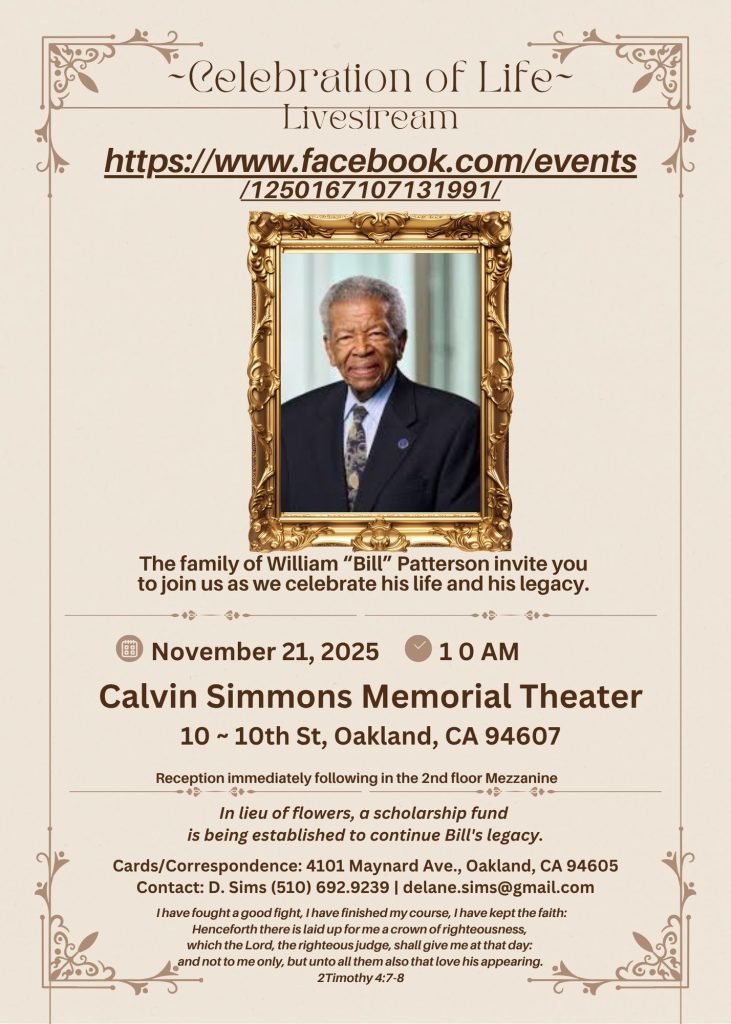
-

 Activism4 weeks ago
Activism4 weeks agoOakland Post: Week of November 12 – 18, 2025
-

 Activism3 weeks ago
Activism3 weeks agoIN MEMORIAM: William ‘Bill’ Patterson, 94
-

 Activism4 weeks ago
Activism4 weeks agoHow Charles R. Drew University Navigated More Than $20 Million in Fed Cuts – Still Prioritizing Students and Community Health
-

 Bay Area4 weeks ago
Bay Area4 weeks agoNo Justice in the Justice System
-

 #NNPA BlackPress3 weeks ago
#NNPA BlackPress3 weeks agoLewis Hamilton set to start LAST in Saturday Night’s Las Vegas Grand Prix
-

 #NNPA BlackPress3 weeks ago
#NNPA BlackPress3 weeks agoBeyoncé and Jay-Z make rare public appearance with Lewis Hamilton at Las Vegas Grand Prix
-

 Activism3 weeks ago
Activism3 weeks agoOakland Post: Week of November 19 – 25, 2025
-

 #NNPA BlackPress4 weeks ago
#NNPA BlackPress4 weeks agoThe Perfumed Hand of Hypocrisy: Trump Hosted Former Terror Suspect While America Condemns a Muslim Mayor




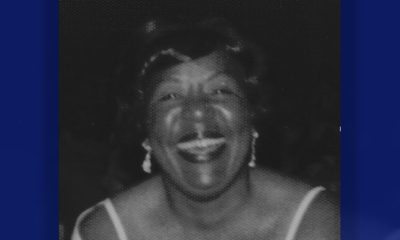





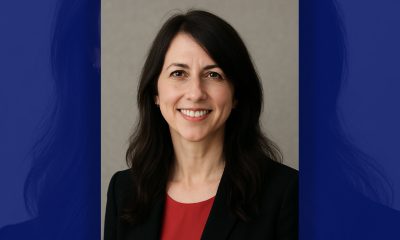

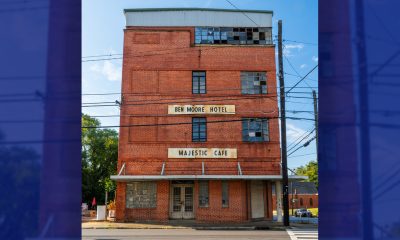

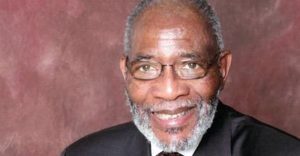





































1 Comment